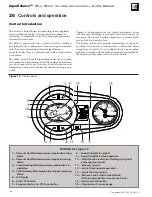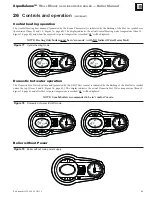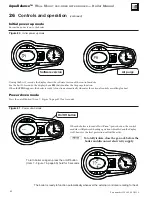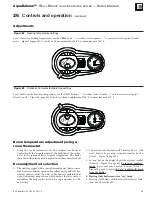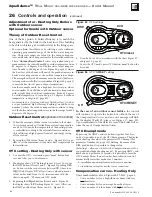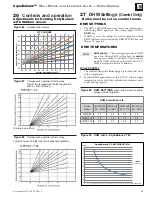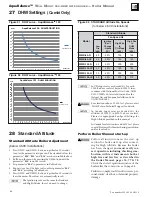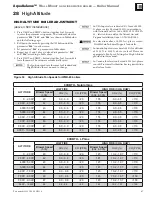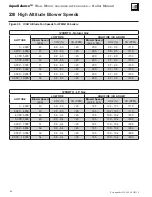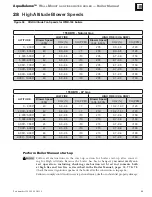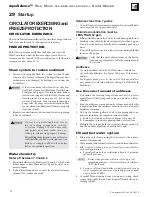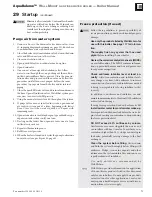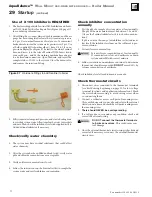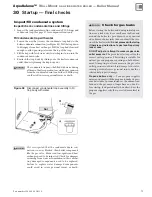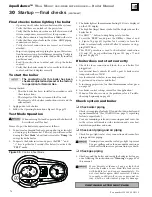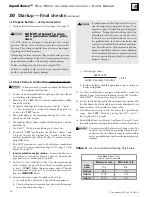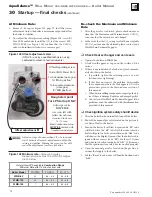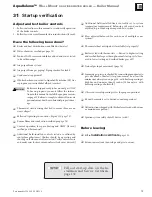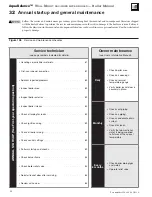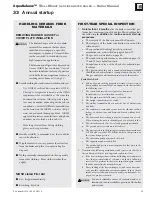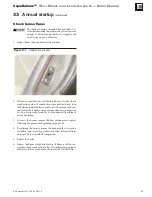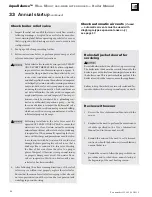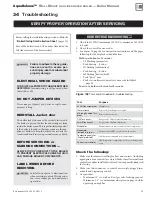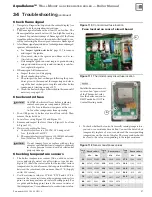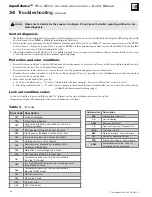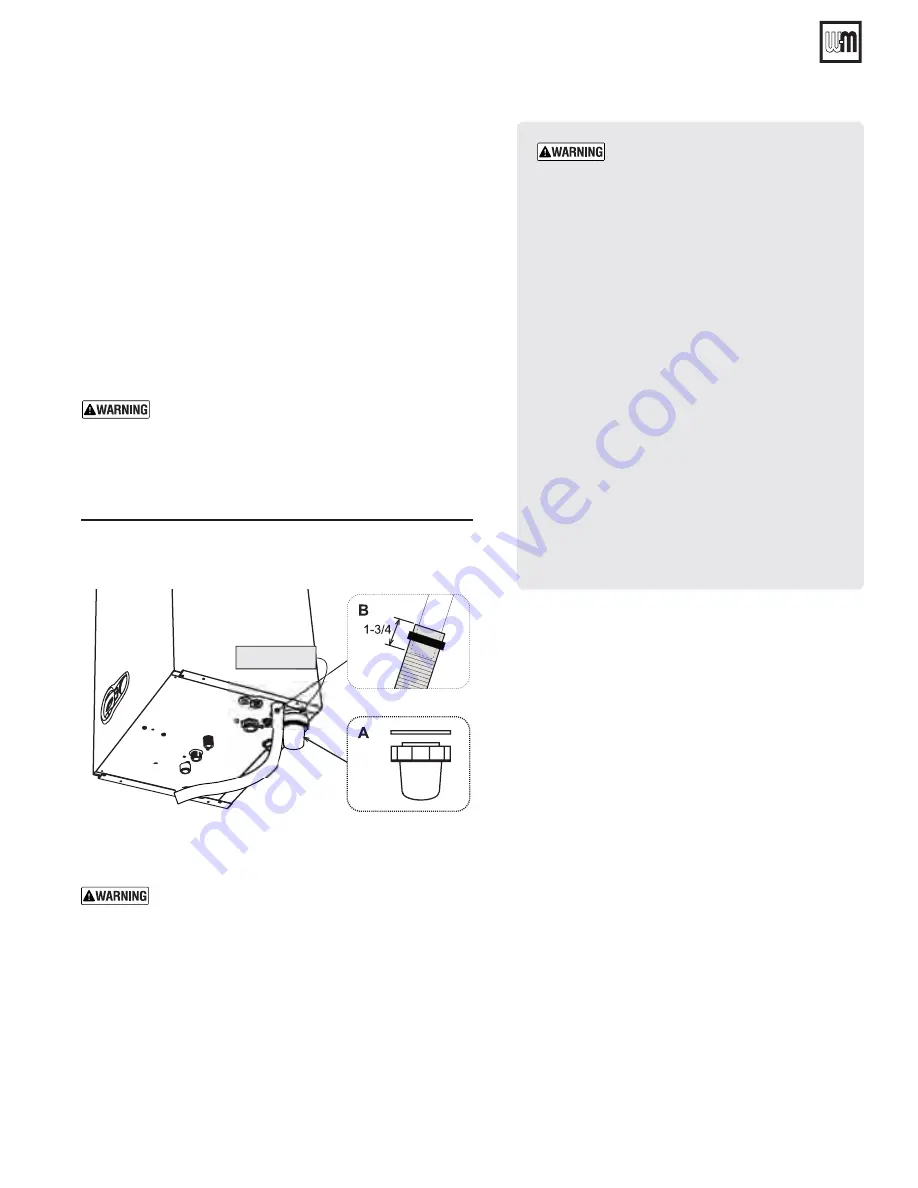
Inspect/fill condensate system
Inspect/check condensate lines and fittings
1. Inspect the condensate drain line, condensate PVC fittings and
condensate trap. (See page 47 for component locations).
Fill condensate trap with water
1. Loosen the nut that secures the condensate trap body to the
boiler condensate connection (see Figure 98). Pull the trap down
to disengage from heat exchanger. Pull the trap body forward
enough to allow pouring water into the top of the trap.
2. Fill the trap with fresh water until water begins to run into the
condensate drain tube.
3. Reattach the trap body by sliding onto the boiler condensate
outlet, then retightening the trap body nut.
The condensate trap must be filled with water during
all times of boiler operation to avoid flue gas emission
from the condensate drain line. Failure to fill the trap
could result in severe personal injury or death.
Nut
Figure 98
Disconnect condensate trap assembly to fill
trap body with water
If it is suspected that the condensate drain con-
nection is or was blocked, then boiler components
like the gas valve, blower venturi, igniter and heat
exchanger need to be inspected. Check for damages
occurring from water accumulation in this cabinet.
Any damaged components need to be replaced.
Failure to replace water damaged components
could result in severe personal injury or death.
Part number 550-100-305/0118
73
AquaBalance
TM
W
ALL
M
OUNT
GAS
-
FIRED
WATER
BOILER
—
Boiler Manual
30
Check for gas leaks
Before starting the boiler, and during initial opera-
tion, use a leak detector or smell near the floor and
around the boiler for gas odorant or any unusual
odor. Remove boiler jacket door and smell the inte-
rior of the boiler jacket.
Do not proceed with startup
if there is any indication of a gas leak. Repair any
leak at once
.
DO NOT adjust or attempt to measure gas valve
outlet pressure.
The gas valve is factory-set for the
correct outlet pressure. This setting is suitable for
natural gas and propane, requiring no field adjust-
ment. Attempting to alter or measure the gas valve
outlet pressure could result in damage to the valve,
causing potential severe personal injury, death or
substantial property damage.
Propane boilers only
— Your propane supplier
mixes an odorant with the propane to make its pres-
ence detectable. In some instances, the odorant can
fade, and the gas may no longer have an odor. Be-
fore startup (and periodically thereafter), have the
propane supplier verify the correct odorant level in
the gas.


